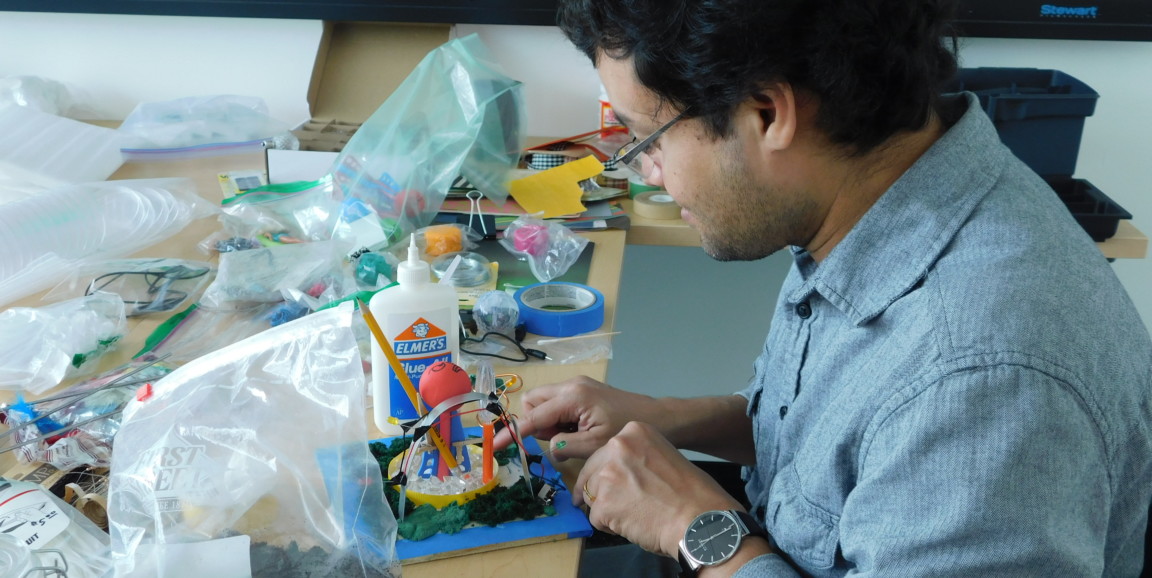On a recent afternoon, Aaron Crapster, PhD, a postdoctoral researcher in Chemical and Systems Biology at Stanford, stared at the objects he'd assembled on the mouse-pad-sized square of plywood in front of him: a few metal rods, a bracket, a plastic ring and construction paper of various colors. "It's a commentary," said Crapster, when I asked what he was building. A commentary on what? "Just like an experiment, it's good to go in without a preconceived notion," he said.
At the neighboring table in the conference room in Stanford's Center for Clinical Sciences Research, lab technician Hannah Ryon repositioned a Barbie doll and a petri dish atop her square of plywood. "It's going to be a statement on women in STEM, but I haven't figured it out yet."
Meanwhile across the room, postdoctoral researcher Shady Saad, PhD, erected a structure of sticks, brightly colored feathers and some odds and ends, including tiny LED lights and pebbles.
"What are they doing?" I asked Joel Slayton, the San Jose-based artist who was leading this exercise in creativity.
"They're experimenting with the future of a specific technology, personalized drones, even if they don't realize it. They're personalizing the way they use this technology," Slayton told me. "They are experimenting by playing."
Specifically, Slayton had instructed the participants, a group of several dozen people from the Department of Chemical and Systems Biology, to envision and build a nest for a personal drone. The nest would serve as the drone's resting place and as a USB charger -- for the drone or anything else that needed a charge.
This session, held in late March, was a culmination of a week of lectures and workshops, part of Slayton's role as the Department of Chemical and Systems Biology's annual visiting artist -- Stanford's Sterling Visiting Scholar. The focus of the week was the importance of creativity to early-stage research processes.
Slayton supplied participants with toy drones (a simple "flying ball" model) and a smorgasbord of nest-building materials, from twigs, feathers and cotton wadding to plastic toys, motors, fans, light bulbs and the wire and batteries needed to make a circuit to power any electronics. He and his collaborator, artist Emily Bright, conducted quick lessons on how to build a circuit -- and how to use a wire stripper and soldering iron to do so.
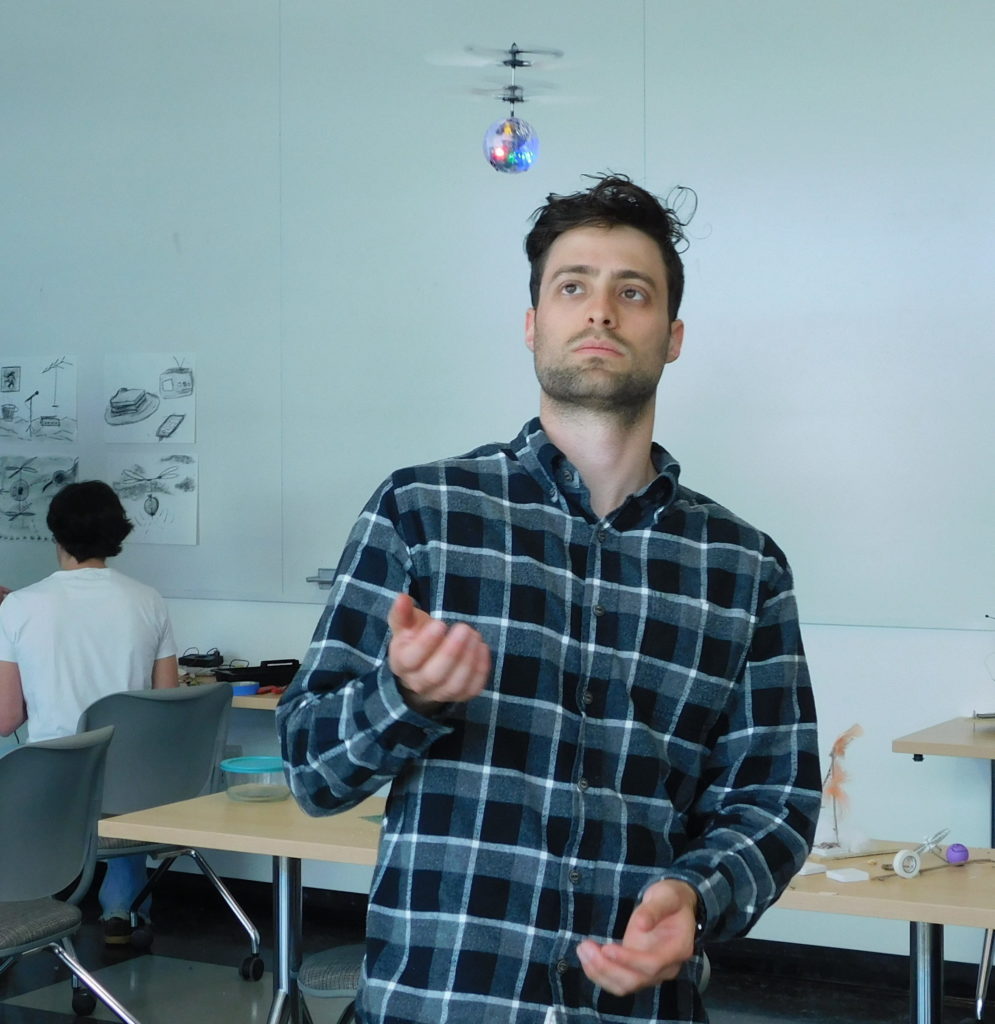
Graduate student Michael Swift and his drone.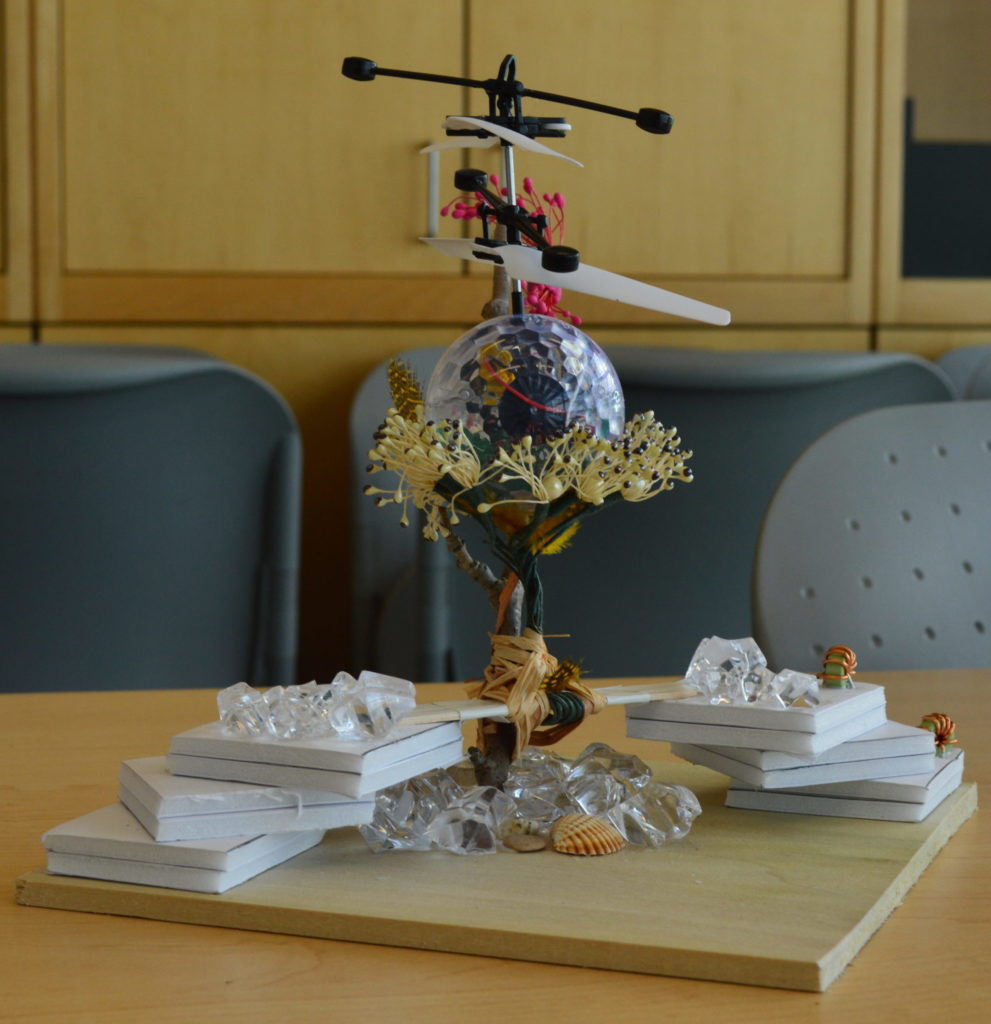
Lab manager Simon Wu's nest for a drone.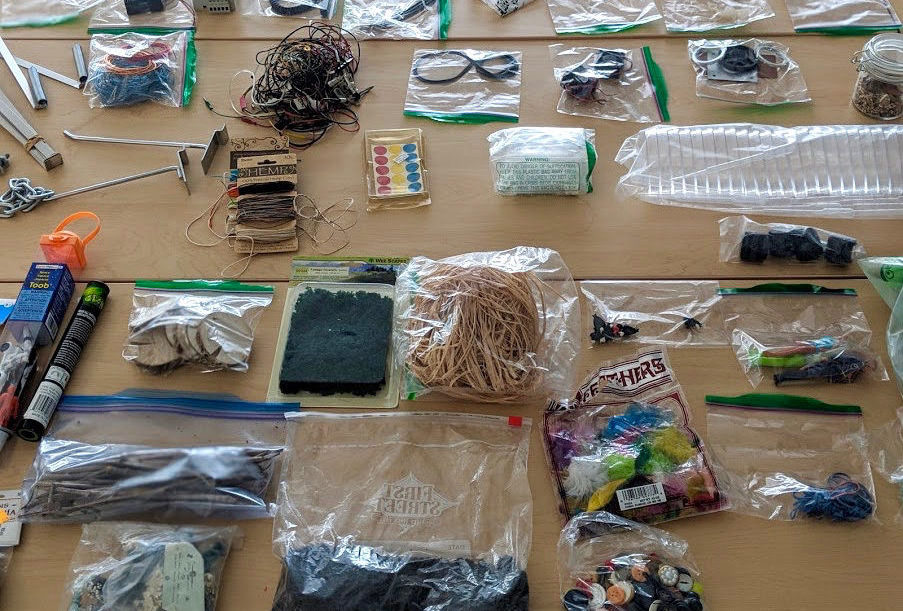
Materials for creating nests for drones. 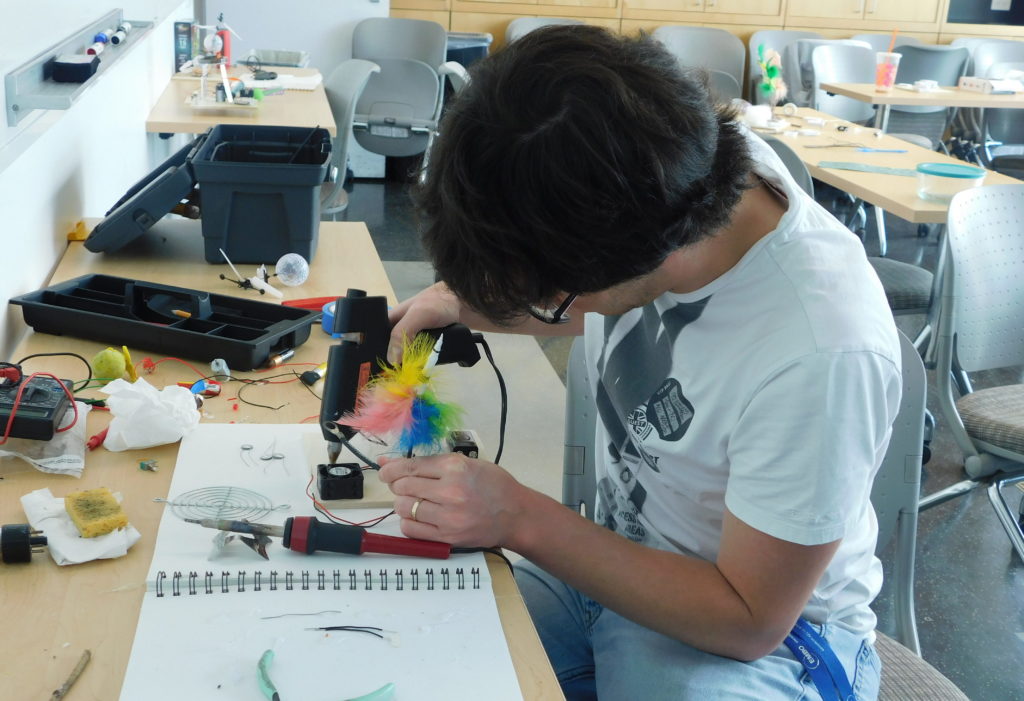
Postdoctoral scholar Antoine Zalc wields a glue gun.
Slayton said some of his goals for the workshop were to open up the relationship between creativity and innovation and to help researchers return to a sense of play.
"We often lose our sense of play, but it's valuable for solving problems," said Slayton. "In this workshop, they're playing with making something that isn't needed -- and often when you make something that isn't needed you realize that you needed it after all. Any really smart speculative design person who would come in here and look around would be saying, 'Wow, that idea has promise,'" he said.
Slayton, a professor emeritus at San Jose State, comes from a conceptual art background and identifies himself as a self-taught computer geek. Over his career of more than 35 years, he has combined art with technology, working in a range of media -- from digital imaging to installations to theater.
Laughter mixed with moments of quiet concentration as projects neared completion.
Michael Swift, a graduate student in the lab of Stephen Quake, PhD, reflected on the process of building his nearly finished drone nest, which involved a Barbie; a prismatic, multi-faceted light bulb; a magnifying glass; and lasers.
"I went into it without thinking, and it came together," a strategy not dissimilar to his approach to analyzing data, he said. "I'll look at data, see something cool and run with that. I might have to change my idea when it doesn't work out, but a kernel stays there in the back of my mind. I try again and have more wrong ideas until it all comes together and makes sense."
Hoping to see a drone nest for yourself? Organizers are planning to create a display on campus in the coming weeks.
Top photo of Sankha Pattanayak by Yolanda Cervantes. Gallery photos by Yolanda Cervantes (top left, lower right) and Emily Bright.


